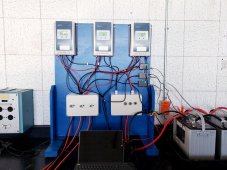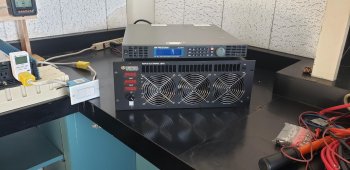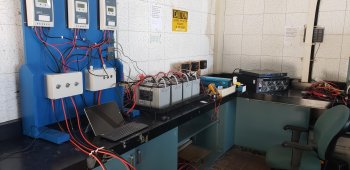Hedges
I See Electromagnetic Fields!
- Joined
- Mar 28, 2020
- Messages
- 20,701
Don't let these students get their hands on lithium polymer 
Are they aware and disciplined in AGM battery safety, specifically high current? (also, the AC voltages from inverter)
It can weld wrenches and jewelry. We get away with working on stuff for years until we make a mistake. I was just hospitalized for a 230VAC shock, and I have professional qualifications and 50 years experience.
Here's valuable advice, some developed in hindsight.
Get insulated handle wrenches so battery terminals can be connected without possibility of bridging to another. Placement of batteries can be optimized to maintain spacing.
Get or make insulated terminal covers. One guy 3D printed them. I used heater hose, and discovered later that is electrically conductive (a hazard at line voltage, but not a bad solution for low voltage batteries.)
Get a portable GFCI and use on output of inverter (or install in attached junction box, discouraging bypass.)
Connect redundant external ground strap to all AC equipment.
Are they aware and disciplined in AGM battery safety, specifically high current? (also, the AC voltages from inverter)
It can weld wrenches and jewelry. We get away with working on stuff for years until we make a mistake. I was just hospitalized for a 230VAC shock, and I have professional qualifications and 50 years experience.
Here's valuable advice, some developed in hindsight.
Get insulated handle wrenches so battery terminals can be connected without possibility of bridging to another. Placement of batteries can be optimized to maintain spacing.
Get or make insulated terminal covers. One guy 3D printed them. I used heater hose, and discovered later that is electrically conductive (a hazard at line voltage, but not a bad solution for low voltage batteries.)
Get a portable GFCI and use on output of inverter (or install in attached junction box, discouraging bypass.)
Connect redundant external ground strap to all AC equipment.






